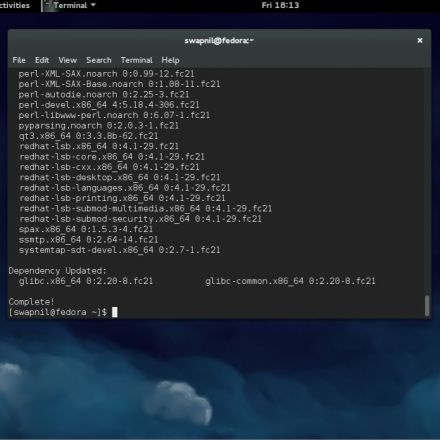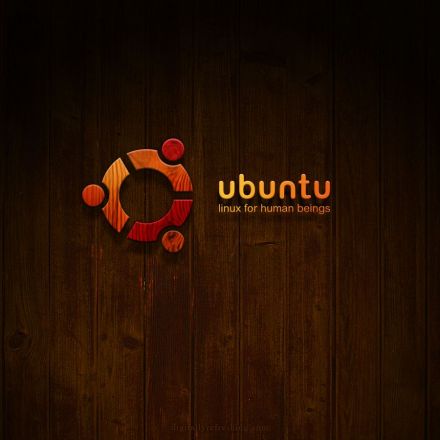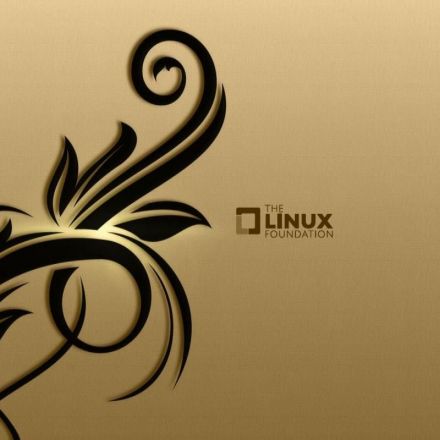

10 years ago
22
The only remaining barrier to entry for Linux
If asked, what would you think is the biggest challenge facing Linux mass adoption? Jack Wallen takes on this question with an answer you might not expect.
Continue Reading


























Join the Discussion
I really cannot agree with this article. The problems that Linux are facing are because of the inherent nature of open source software, fragmentation.
This is a problem most tech-savvy people see as a good thing but makes it difficult to get into Linux, Ubuntu being so popular is helping but there are still issues. Just deciding between things like KDE, GNOME, XFCE, Cinnamon and so on can be close to impossible for a rookie.
And that's just the beginning. Meanwhile Windows is becoming better and better and Windows 10 is looking amazing, immensely updating the desktop environment. Is Linux becoming viable? Yes. Is it there just yet? No, I don't feel like it is. Ubuntu is taking good strides towards becoming a standard in the Linux world but I know many who dislike that as well.
But even Ubuntu is facing fragmentation, as it became more popular Linux Mint gained traction and we gain yet another distribution and more fragmentation.
[This comment was removed]
For me the issue is really knowing that the programs I want will run on my computer. I work on linux all day every day. I have several terminals open at a time, but at home I have 4 computers. 2 laptops for my wife and I and 2 gaming rigs. I know that any game or software I want can run on them. I love linux, the command line and programming environment is so powerful and useful. But at the end of the day, I want to be able to install the software I want and most developers don't support linux.
Very true, all too many times have I been stuck trying to configure wine correctly until I gave up and moved over to a complete Windows environment with a few Linux-VMs for some minor things.
Linux mass adoption has already happened, although on mobile: over a billion Linux-based Android phones were sold last year. (300 million PCs sold in the same timeframe.)
Now, desktop Linux mass adoption you say? Unfortunately, the PC mass market will continue to be in Microsoft's pocket due to inertia. It is much easier for everyone (customers, OEMs, peripheral manufacturers, software/game companies) to continue with Windows than to switch. Even a UX blunder like Windows 8 won't get people to switch, because it's much easier to just keep using an old version of Windows and wait it out.
Well, I'm not sure what it's worth, but it got me to switch. If it hadn't been for Windows 8 I wouldn't be rocking Linux MInt right now.
People are really weird about their computers. A friend and I were volunteering for a non-profit, and we tried to get them to switch over to Linux. We got permission to install it on one of the older PCs in the computer lab. The director was flummoxed by it, however, and she thought that if she couldn't understand it, nobody else could. I had a conversation with her that went like this:
Her: "I don't even know how to get on the Internet with that thing!"
Me: "...You double-click on the Firefox icon. Just like on the Windows machines."
Her: <blank stare>
In the end, the non-profit ditched Linux and opted to spend hundreds of dollars on a Windows upgrade instead. The final nail in the coffin may have been one volunteer who was virulently anti-Linux (although he was a Linux user himself). He had a wild hair up his ass because Ubuntu had taken several months to provide support for his WiFi card. As a result, he decided that Linux was unreliable and should not be used by ordinary computer users.
[This comment was removed]
I would say that application and hardware support will continue to hold Linux back. Also, Windows stability and security has improved, while at the same time Linux's has stagnated.
In my head it goes like this: Linux attracts less users than Windows -> some specific applications (scientific, for example) have only Windows versions -> Linux attracts less users than Windows. And this goes round and round.
And it is true that now it is easier to install (not to mention maintaining) Linux than Windows. But the average user does not have to install Windows at all as it comes installed on computers.
The story is long, it covers my experience with win7, win8, and two very different linux distros. It sums up a lot of frustration new linux users experience, so maybe some of you will find it an interesting read.
This story started with ubuntu 5.x or something, but that story was more like a game, where I just wanted something different, but couldn't (or wouldn't) switch entirely because I liked photoshop, and I also liked playing games (diablo 2 and quake 3). Which meant, that if I had to dual boot, it's a waste of time to constantly switch, when windows could do all things linux could. Plus I was sharing a desktop pc with my sibling, who didn't really see the point as well.
Later on, I played poker for a while, and none of the software at the time ran on linux, both poker clients, and stuff like holdem manager, so it didn't even cross my mind to switch.
3.5 years ago I got my own laptop with win7 preinstalled, and even I kept playing poker for a bit, it crossed my mind to give linux another chance. At that time, quake3 became quake live (played in a browser), and diablo 2 slowly faded for me. I also had to study a lot, and thought linux would be: a) a good break from all gaming and poker, b) give me some respect from coding/programing teachers, c) help me understand command line better, etc.
I don't remember what exactly didn't work when I dual-booted ubuntu back then. I think it was laggy mousepad, or some screen brightness settings that didn't work. But when these tiny things are experienced every day, it becomes annoying. And when it becomes annoying, it becomes unusable.
I soon upgraded to win8 (to my dismay), and forced myself to use that. I started to work in my internship, and it was not enough time to play around with linux when stuff needed to be done.
After 2 years of having a laptop - exactly when its warranty ended - it started overheating a lot. Being a poor student, and starting to freelance, I decided to pop linux in, and saw that temperatures are reduced by 20-30% under light use. I decided to try out the new and shiny Manjaro with xfce (which is still running on my laptop to this day), and to make myself a developer who uses linux daily.
Problems quickly arose. While it was great in browsing and coding, it was not that great with emulating a web server (I used xampp), and didn't work out of the box how it did on windows. Having spent countless hours of tinkering with various linux servers on virtualbox to just get my phpserver running and accessible, I gave up to deadline pressure, instaled win 7 over my win8, and went back to the world of windows. I agree playing with linux servers taught me a lot, but in a time where work has to be done fast, there's no time to learn the whole new thing, as there is no time to try and make illustrator work.
I moved countries, settled in a full-time position, with company's laptop, and slowly started using only linux on my home laptop. I was more experienced now, I could set up vagrant boxes, virtual hosts, change some things on the server, so it didn't scare me to use linux for personal projects anymore. That came at a price of a lot of time spent on it before.
At my work, I slowly got into a hate and hate relationship with win8 again, and all the bloatware that this laptop had preinstalled. I hated user interface with these stupid tiles, and I was thirsty for something new. And that's when I started to look into linux world for my work laptop as well. One of my col...
Read FullWhile I'll admit it was several years ago, Walmart sold a line of PCs w/ Ubuntu pre-installed. Changing OSes is no small task. Little things you do on a daily basis are slightly different, and it can be a real hassle, or waste of time, while you are trained for the differences. I think that having Linux available (a quality distro that is) as a preinstalled option on the shelves of big box retailers would certainly increase adoption, but only if the support was there from the OEM. I'll go further to say that it will require a good rolling release distro. The average end user isn't going to put up w/ reinstalling every 6 mos or suffering quickly ancient software because they didn't.
Apologies in advance for exuding some of the frustrations I've had with Linux in my comment below.
As a Windows user who has tried to make Linux work both at home and at work, when it works it's a beautiful, fresh experience, but when it doesn't work is when it's a PITA that completely nullifies whatever free and open benefits it may have. And before anyone asks, the most recent experience I had was with Linux Mint 17 Qiana (hereafter referred to as LM), so it's not exactly one of those "you had a problem with Linux a long time ago; it's not like that now" situations.
What broke it for me this most recent time? Printer support. LM detected my printer just fine, but getting it to print from it the first time was literally a nightmare. For whatever reason, asking it to tell the printer to print a one-page document caused it to spew out endless pages of hex characters. Why? Who knows. I then spent about an hour trying to make it stop doing that, which really tested my Google-fu because all I could find were user accounts of similar instances that occurred on prior versions of LM, with fixes that were no longer completely applicable or working.
Eventually I did something with an ndiswrapper setting (after everything else had failed) and got the printer to work properly. All good now, right? Nope. It only printed, say, 90% of the time. That remaining 10%? The printer just sits there for no apparent reason and refuses to print until I power cycle it. Well, 90% is still pretty good, right? "A" for effort? Well, when Windows-anything can get it to print 100% of the time, anything less especially in an active work environment where people are waiting for documents to print is unacceptable.
http://media.giphy.com/media/lF5bH6enH9F1m/giphy.gif
So, was that the only thing? That one printer experience? No, it did the same with the networked printer (different brand) in my boss's office, and I had a darn fun time explaining why her printer was spewing out endless pages of hex characters. Anyway, no, printer problems weren't all. Prior to trying out LM at work, I tried LM (16, I believe) at home, and there I was faced with not being able to login sometimes because all I'd get is a black screen and a blinking cursor. And yeah, there was a fix for that, but... just look at it from a Windows user's point of view. You're kicking my ass right at the door! I can't even turn the knob without using a command line!
Damn it, Linux! I want to like you! I really do! I don't try to all-in with you at home or introduce you to my work for shits and gigs, but when I have to %a %b %e, %l : %M %p you just to make you give me the time in a format I'm familiar with, you done fucked up now!
I have to say that I definitely agree with the printer issues. The drivers just aren't up to scratch. I ended up having to switch to a different printer to get it to work for me.
I don't agree with the bit about time formats, though. I really like the customizability of them and took advantage of it to make a format that looks nice (to me, at least).
About the time format thing: I'm not against customization. Being able to make the time format look however you want is awesome. However, in my case, all I wanted to do was change the default 24-hour time format to a 12-hour one. That was it. And that took Googling "how to change time format in Linux Mint" and copying and pasting %a %b %e, %l : %M %p to do. Was that hard? No. But it wasn't intuitive (or at least it wasn't to me), and in my opinion shouldn't have been necessary for something like that.
Hmm, that's odd. I guess they changed it at some point. On mine it includes a button that says "Show information on date format syntax" which takes you here. The page is actually quite nice, including presets, references, and even a "build your own" date format.
When I made my own, I just pulled up the reference and started playing around. It really wasn't that difficult (or unintuitive).
Yeah, I think that might have came later or in an update, because when I was trying to change it at the time I don't remember the interface providing or linking to any kind of formatting reference. The site you linked would've been mucho helpful.
HAH, I remember buying RedHat 5 from Best Buy back in the day. I don't think OEM bundling is the answer, Linux distros just aren't designed to be a good fit for common users. Desktop environments simply fall over in terms of design aesthetic and usability. Unless you're a geek of course, but you can make anything do anything which is why Linux works well for you. Android seems to be doing just fine taking a significant chunk of the handheld device market, why? Great design and ease of use.